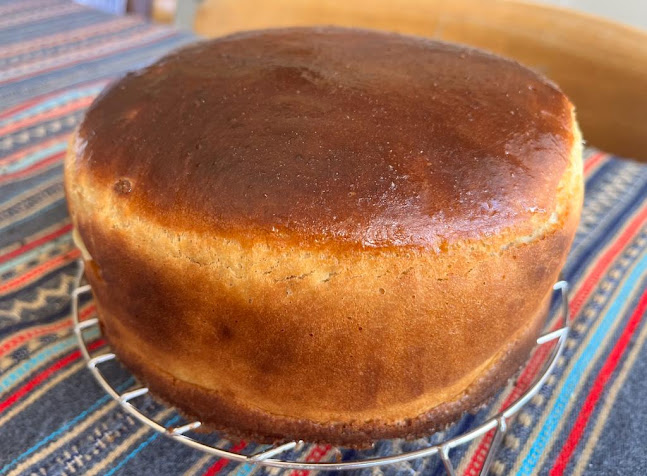Sally Lunn
Welcome to another step-by-step recipe from BreadClub20. Why not drop by our main Facebook page by clicking here.... If you like what you see and enjoy the recipe, we hope you join us by 'Liking' and 'Subscribing'.
There's a good deal written about Sally Lunn. And a good deal of it is confusing and contradictory.
The Sally Lunn Bun is steeped in history and tradition. It has a place within the social fabric of the town of Bath, in the southwestern part of England; and in English bread cookery as a whole.
If we are to make a Sally Lunn, we must do it justice. Bake it to the best of our ability and, most importantly, research it to ensure that the Sally Lunn we bake is authentic.
Like many good stories, the authenticity of Sally Lunn has been argued over throughout the centuries.
Did Sally Lunn exist? Well, the Sally Lunn Eating House in Bath is definite in their view that - yes, she did.
Sally Lunn, they tell us was a Huguenot refugee named Solange Luyon who brought the recipe to Bath in 1680.
However, you'll find other sources citing the name as being a corruption of soleil et lune (the sun and moon) referring to the golden crust and the white dough interior.
Either way, the first record of a bun bearing the name is in Bath and dates from 1780.
The Sally Lunn bun has been exported around the world and has lost some of its original identity - now being baked sometimes using cornmeal, sour cream, buttermilk and the like.
I'd like to take us back to something reminiscent of the authentic Sally Lunn.
It's traditionally baked in a cake tin and split into three and filled with clotted cream and jam - like a scone..however, it is undoubtedly always seen as bread, certainly never as a cake.
FORMULA
for the starter batter
6 gms of dried yeast (not instant)
4 gms caster sugar
50 gms strong white bread flour
175 gms warm semi-skimmed milk.
for the dough
175 gms of strong white bread flour
25 gms unsalted butter (softened)
25 gms caster sugar
3 gms crushed sea salt
1 medium egg (beaten)
grated zest of one lemon
for the glaze
15 gms caster sugar
15 gms hot water
15 gms semi-skimmed milk
METHOD
1. Make the starter batter. Stir the yeast and sugar into the milk and add the flour. Beat until as smooth as it will go. Cover and leave in a warm place until the mixture becomes frothy and smells of yeast.
2. Prepare a 6-inch round cake tin (loose-bottomed or silicone or clipped). A double layer of baking paper will help if you do not have cake/pan release. Make sure the paper comes at least two inches above the top of the tin.
 |
| You can trim the top paper down a little before baking or after rising. |
3. Into a large bowl add the flour, the butter, the salt and the sugar. Add the lemon zest.
4. Beat the egg into the yeast mixture and add to the flour mixture.
5. Beat until you have a smooth batter.
6. Pour into the cake tin, level and leave for about 1½hrs until it has doubled.
7. Preheat the oven to 220⁰C.
8. Bake lower down in the oven until it is golden brown and set. (around about 25 - 30 minutes - but judge for yourself)
9. During the baking, dissolve the sugar in the water and stir in the milk.
10. Glaze the top of the bread as soon as it is out of the oven. It can sit in the tin for about 5 minutes before turning it out onto the rack.
Traditionally, the Sally Lunn is split horizontally twice and filled with cream and jam.
This is simply sliced down the middle to reveal the crumb. If you don't want to fill it with jam and cream...it's delightful with butter and jam.
Happy baking



.jpeg)








Comments
Post a Comment